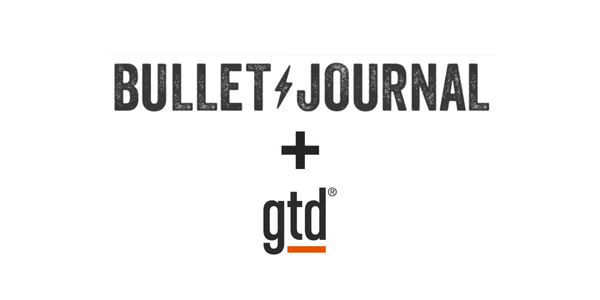During my Weekly Reviews I found myself missing lead and lag indicators — and more importantly, I realized that simply letting my intuitive judgment run the show was not working for me.
That’s why I’ve been supplementing GTD (which I’ve practiced for decades) with the 12 Week Year framework. And for me, that’s fine.
Missing lead and lag indicators—so well said, so spot-on.
I myself have also been using both Bullet Journal (BuJo) and GTD methods simultaneously, and I’ve come to similar realizations as you.
Although GTD does have its own philosophical take on vision and goals, in terms of actual mechanisms and workflows, it doesn’t make long-term goals particularly tangible or visible. Especially in the process from collection to execution, it tends to be more reactive in nature. In contrast, BuJo consciously includes a "Future Log" section, and each month has a small blank space where you can intentionally fill in your plans. Admittedly, over the years, this is the section I’ve used the least—because I often don’t know exactly what I’ll be doing in a given future month. But I still think it’s a brilliant concept. Its purpose is to help you visualize your future more clearly. If you write down a goal to achieve or a trip to take in a specific month, it gives you greater confidence, hope, and motivation.
Inspired by this idea, combined with Franklin’s concept of weekly virtues and my own monthly review and reflection practice, I recently added a small new table to my Next Action List in Obsidian. It has only two rows: the top row shows the calendar dates for the next 7 days (e.g., 8.21, 8.22, 8.23, etc.), and the bottom row is space where I can check or cross off each day. For the first week, I wanted to build the habit of going to bed early (since poor sleep and frequent late nights have left me constantly exhausted). So I wrote my target bedtime window above the dates. Since I revisit my Next Action List file multiple times daily, this table serves as a powerful visual reminder, sitting alongside my other next actions and constantly prompting me to stick to my goal. Out of the 7 days, I succeeded on 5—an achievement I’ve never managed before in years of trying. I feel incredibly proud and, for the first time in a long while, physically refreshed and healthy. In the second 7-day cycle, I tried practicing a musical instrument for 15 minutes daily. I succeeded on 6 days, and missed one due to being overwhelmed and tired. But again, I see the value of this visual tracking table: it gives me the motivation to “check in,” which might just be the greatest benefit of what you referred to as the "missing lead and lag indicators." I wonder if your 12 Week Year framework serves a similar purpose? Haha.
As for my understanding of GTD, when I was younger, I imagined it as some super-complex system that could magically solve all my problems—even though I had no idea David Allen’s book existed at the time. My understanding was extremely superficial, and my attitude toward GTD shifted from blind faith to indifference, simply because I didn’t understand what it actually was. It wasn’t until this year, when I finally read the original book, that I realized what GTD truly means. Since then, I’ve been refining and optimizing my own practice. Since everyone uses different tools, has different task loads, and operates in different contexts, we’re all customizing and integrating various approaches to achieve the same goal: getting things done efficiently, thoroughly, and with a calm, stress-free mind. So I totally understand why many people might have their own misconceptions about GTD—after all, not everyone dives deep into it.
I read the two articles the original poster Tom Hagen shared, and honestly, they weren’t too bad—they did mention GTD’s core steps, starting from collection. When we encounter people online who misunderstand GTD, perhaps all we need to do is gently point it out and clarify things. Whether they listen or not doesn’t really matter. That said, if someone truly can’t grasp it or insists on holding a mistaken view, I don’t think we need to force them. Everyone walks their own path. "Grant me the serenity to accept the things I cannot change, courage to change the things I can, and wisdom to know the difference." That quote comes to mind here.
I hope my sharing adds some value to this discussion. Honestly, I find Tom Hagen’s thread quite meaningful, and the replies below are genuinely insightful. This has probably been one of the most valuable forum posts I’ve come across recently, haha—no offense to the authors of other threads, this is just my personal impression.



